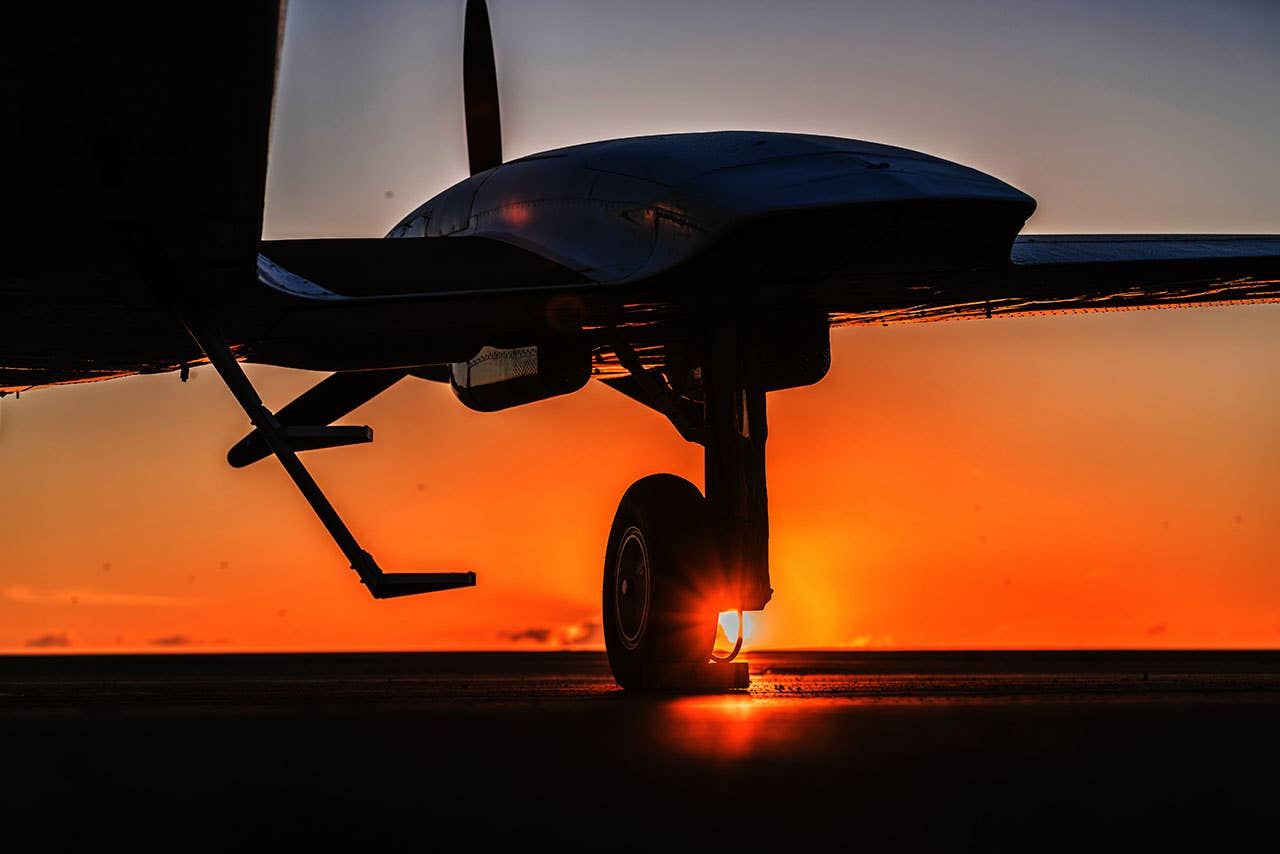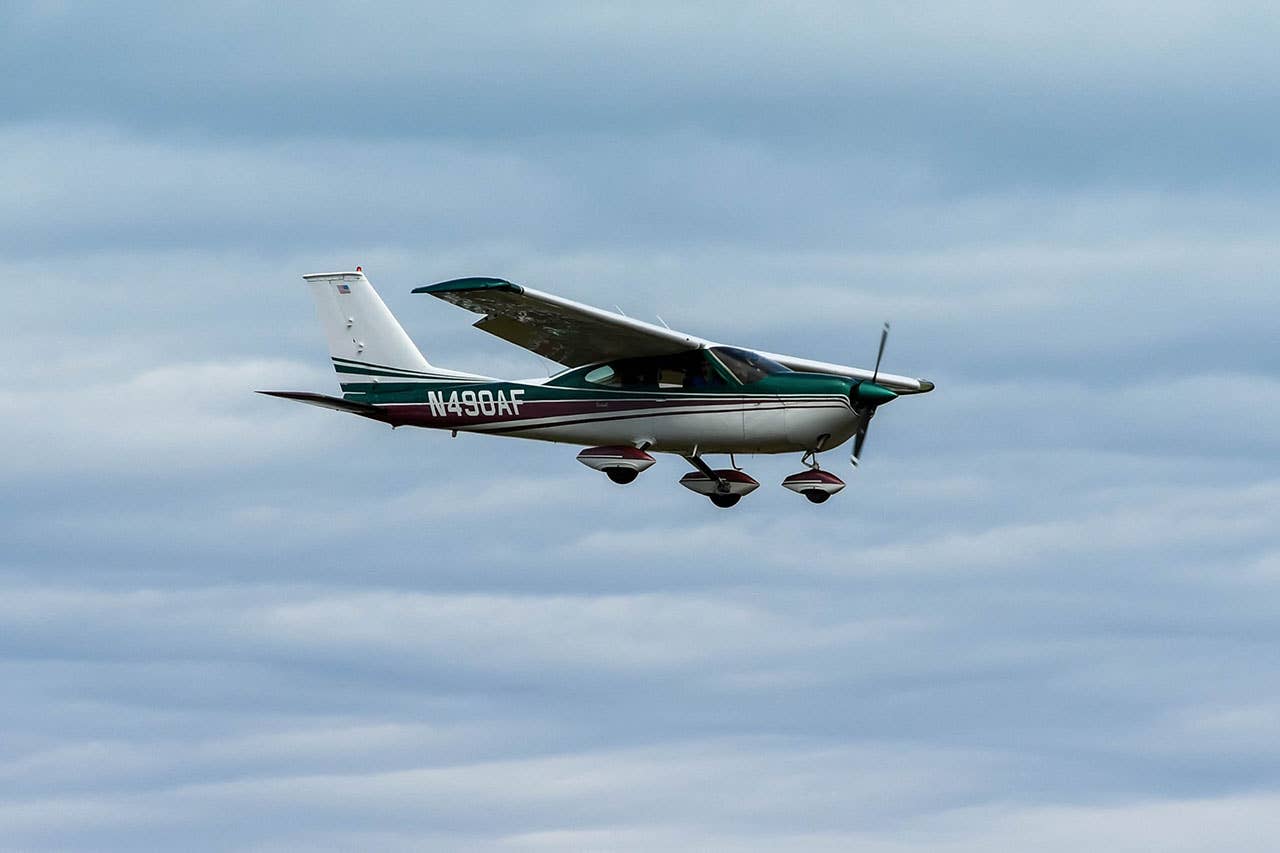Flying With Little Or No Lighting
The airport and airplane’s lighting systems are critical parts of safe flying when it’s dark outside for reasons not always obvious until it’s too late.

"I think I need some dual on night flying." Forty-five years ago, the voice on the phone belonged to Lester, owner of a 1946 Cessna 140, who I occasionally encountered in the airport lounge. I was a fearless greenhorn flight instructor, ever eager to indulge in anything resembling an act of aviation. We agreed to meet the following evening.
Bear in mind that, in the halcyon days of 50 years back, a private license could be earned without any required training in night flying. It was presumed to be an advanced skill, something to be acquired on your own after proper seasoning as a daylight pilot. It was perfectly legal to nibble around the edges of night flight by flying later and later into the twilight (without passengers) until one was landing in total darkness. Not smart but legal. Lester had no doubt conducted his own self-checkout in this manner.
As we went through a preflight briefing, Lester came clean about his sudden desire for instruction. It turns out that he had been hopping rides in the dark at a private grass strip a dozen miles south, where the only illumination was an electric lantern he'd hung on a fence post at the approach end of the runway. He figured that was sufficient to align him with the strip until he could see the ground in his landing light beam. He got a little too low and clipped the fence post with a main gear tire, fortunately hitting just below the axle so as to bounce off rather than snag the post and wind up inverted.
Ol' Lester had never heard of autokinesis, wherein a single point of light in a field of darkness will be perceived to be moving in random directions, causing a pilot to chase it fruitlessly. That is no doubt what caused his near-disaster. In any event, landing in the dark without runway lights is an extremely hazardous endeavor, no matter how good your aircraft's landing lights are or how familiar you are with the ground lights in the area.
I've had numerous encounters with compromised lighting systems over 60-odd years of night flying, all of which have taught me the value of having as much illumination aid as possible. As those same federally funded lighting systems at small airports began to age, their components often suffered from inept or unfunded maintenance.
It's not uncommon to find longstanding NOTAMs about "medium-intensity runway lights out of service," "Runway 17 PAPI lights INOP" or "rotating beacon N/A." You must guard against arriving without knowing of these outages and succumbing to the temptation to "give it a try." Look up the lighting data in the Chart Supplement information and any NOTAM (Notices To Air Missions) for the airport. Never assume all will be working when you get there, and ALWAYS have sufficient fuel to reach an alternate lighted airport.
A Night Charter Gone Wrong
Back in the mid-1960s, I rode along as a backup pilot on an emergency middle-of-the-night charter out to Tucumcari, New Mexico. After 4:45 of flying, the town lights of TCC came into view, but the airport was dark. In those days, the local flight service station was manned 24/7, and the specialist on duty informed us that the field was NOTAMed "lights out of service" due to construction and repaving. With one hour of fuel left, we had nowhere to go, so the FSS got ahold of someone who could get part of the lights on, and we landed on a portion of the runway that hadn't been dug up. Lesson learned: Never again.
Even so, for a NOTAM to be issued, somebody in charge has to know there's a problem. If everyone goes home before it gets dark, the lights can be out of service for several nights before anyone notices they're not on. An "electric eye" may be supposed to turn the lights on at sundown, but those can fail.
I also have limited faith in radio-controlled activation. Sold to towns too cheap to leave the lights on all night, pilot-controlled lighting requires knowledge of the correct frequency to use for the requisite microphone clicks, a functioning electrical system, a working radio and mic button in the airplane, and functioning electrical power and ground receiver connected to the light system. If any one of these links in the chain isn't working, you are sure outta luck. Again, always have alternative well-lit airports within range, in case a NOTAM has not yet been issued.
Total Eclipse
I once borrowed a Cessna 310 to fly to a neighboring airport with a longer runway to practice night landings after it got dark. Little did I know that while I was out practicing at that nearby strip, electrical contractors were at work on my home airport and had disabled the runway lights. When I flew back home about 10 p.m. to put the 310 in its hangar and retrieve my car, the field was dark. Oh, well, I said, I can probably pull off one landing with just the airplane's landing lights. After all, I knew the surrounding obstructions and streetlights intimately!
Trust me, it's not as easy as it sounds. Rolling out onto final with 100 to 200 feet of misalignment means the runway markings aren't going to show up in your light beams. With some creative wobbles, I found the threshold after a couple of tries, but my depth perception was totally lacking. I landed the twin Cessna about 10 feet in the air, wiping the throttles closed when I thought I was just above the runway. It dropped in with a massive "thunk" that fully tested the integrity of the landing gear. Don't try to land on a dark airport; it's not worth the risk of damaging the airplane.
More than anything else, landing an airplane in the dark requires an outline of the runway, clearly defining the corners of the approach threshold and providing rollout guidance as you decelerate down the ladder of edge lights. You can do without a landing light if necessary, so long as you have the runway virtually displayed outside your window but not the other way around.
In fact, when I teach students to land at night, I don't let them use the landing light at first. We demonstrate the technique of flaring out with the runway lights at shoulder height and feeling for the pavement with the main gear. I then make them practice it so they will have the confidence of knowing they can land successfully if the landing light ever burns out. The first time they do use the landing light, they have to be cautioned not to fixate on that spot of light out ahead of the nose; otherwise, they might forget to flare out and hold off with the peripheral view of the runway edge lights.
It's Really A Taxi Light
Even if you don't plan to land after dark, always preflight the aircraft's lights. If you have nose-mounted landing lights, it's common to leave the wires disconnected if the airplane's been in the maintenance shop with the cowling off. Confirm that the lights are operational before you leave the shop ramp. Sure, you have two landing lights, perhaps one for a taxi light and one aimed for landing, with increased wattage. Take note that both are working, not just that there's a spot of light on the hangar across the way.
I once took a summertime trip to an airport a couple of hundred miles away, planning to return well before nightfall. As was typical, my business took longer than expected, and it was dead dark when I got back to the airport for the return trip. Imagine my surprise when neither of my twin lights turned on; I'd evidently been running around with one burned out, and the second finally gave up as well. Taxiing out to the runway had to be done very cautiously (probably with a flashlight out the window for confirmation). A landing light is not required equipment other than for commercial operation, but I was certainly grateful that I could exit my home runway directly onto a well-lit ramp.
With long-life LED landing and taxi lights, bulb burnout is rapidly becoming a distant memory, but switches, connections and wiring can still fail. Keep a good bright LED hand torch in the cockpit pocket for a backup. Never taxi blindly, proceeding in darkness toward a lighted area up ahead. That will be just the time you'll encounter a taxiway's edge-dropoff or a towbar somebody left out on the dark ramp. How do I know these things? Don't ask; just trust me, I know.
Compromised Lighting
You say you don't need that out-of-service Precision Approach Path Indicator beam to guide you to the runway? During the day, you're probably right. At night, however, you'll miss it. When it's dark outside, you just don't get that too-low feeling like you do when it's daytime. The PAPI's three-degree slope will keep you out of the trees and powerlines. Never descend below 300 feet AGL until close in on final. If you see the threshold lights flickering, pull up because you're looking at them through tree branches. And always promptly report any PAPI outage to the airport management in case they doesn't know about it.
A beacon light being out of service may not sound like a big deal in this day of GPS leading us to the field. However, it is a nice confirmation you're headed the right way and the airport has power, miles before you get there. Never assume that the beacon flash you're looking at is the right one; when two or more airports are closely aligned, it can be difficult to judge distance at night. Just ask the (former) crew of the Atlas Airlines cargo 747 who landed at Wichita's Jabara general aviation airport instead of on the McConnell AFB runway 10 miles further south.
Temporary Lights
Two years ago, our airport suffered a meltdown in the constant-current regulator that powers the runway lights. Repairs dragged on and on all summer long, and as we lost daylight hours going into autumn, I grew desperate for night-flying capability. The city fathers didn't seem concerned about having reliable airport access to their town, so I spent $300 buying stake-mounted solar lights. I installed 60-lumen lights at the threshold of the favored runway and put a 15-lumen light beside every other runway light on both sides, enough to provide a 1,000-foot touchdown zone. This was sufficient to make emergency landings and takeoffs in the dark, a temporary expediency that saw us through the winter.
A half-century earlier, the turf runway where I learned to fly offered "runway lights upon request," at least according to the state airport directory. What that meant was that we had kerosene-fueled construction flare-pots located along the sides of the half-mile strip, which we could light for a few hours of night-flying capability. Sometimes wind or propwash would blow a light out or the wick would need trimming or extending, but it was better than nothing and served me well during the night hours I needed to log for my commercial license. What we would have given for the convenience of solar-powered lights that come on reliably at sundown.
The important thing to remember is this: Night flying, particularly the takeoff and landing phase, is inherently risky. Operating without full airport and aircraft lighting is only going to heighten the risk, so don't overstep your ability to accept failures in the equipment. The dark environment is unforgiving.

Subscribe to Our Newsletter
Get the latest Plane & Pilot Magazine stories delivered directly to your inbox






